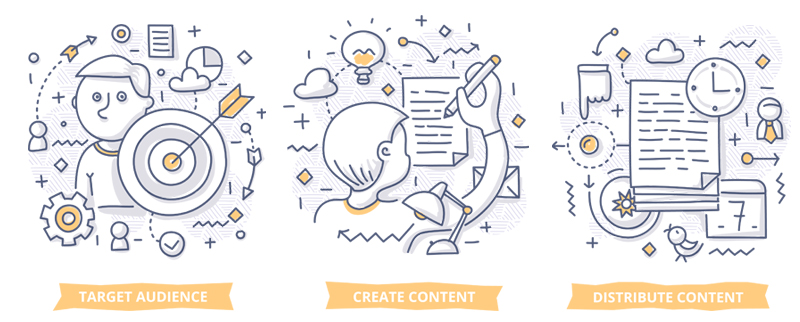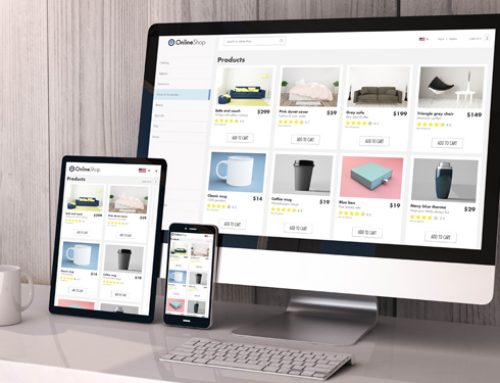5 Tips to Improve Website User Experience
Who is your audience? Who will be visiting your website? How do you keep your visitors, customers or members coming back time and again?
These are some of the questions we ask our clients when we begin working with them. Designing a website around the user is essential to creating an engaging user experience. We have all gone to websites that have disorganized content, or the website is outdated and looks terrible on a smartphone or tablet computer. There are many barriers to a high quality user experience. Let’s take a look at five important things to consider when upgrading your existing website or building a new one from the ground up.

Tip #1: Make Your Site Responsive
We are often approached with websites that can no longer keep up with technology and cannot be effectively viewed from a tablet or phone. These days, having a responsive site is necessary as 56% of the top websites are viewed from phones. Many premium WordPress themes have built-in mobile responsiveness and provide theme options that allow you to tailor what is being seen through a phone or tablet. There are also more arduous ways of creating an entirely different site just for mobile, but if you stick with a premium theme and learn what the options are, this will save you a lot of time and effort. Make sure to test your site when it’s done on all browsers, on different computers (PC versus Mac), and on different phones/tablets to ensure that your website is looking great on all fronts.

Tip #2: Well Organized Content and Navigation
Can’t find what you’re looking for? This is one of the biggest issues we see when redeveloping websites. Thinking about what information the user really needs and wants, then developing a simple site map to keep your information clean, clear and uncluttered is the first step in organizing a website. Anytime you add a page in the future, you can go back to your site map and see where it fits in the structure.
Your menu and site navigation should be simple and intuitive. Less is more, and consolidating content on your pages will prevent users from getting lost on your site. Most content should be accessible through one click in your menu and not buried in links on pages. Your homepage should be a gateway to the most important information and using your footer and possibly a second top quick link menu can be effective tools to making your website user friendly. Get your users the information or products they want as quickly as possible and you will have happy and frequently returning visitors.

Tip #3: Use Vivid and Powerful Images
One of the biggest hurdles we are faced with is finding quality photos for the design and marketing of our websites. Using powerful and engaging images draws in your audience. Lack of high quality images creates not only a brand issue, but gives the user the impression your company is not professional. Stock images are very affordable these days with many copyright free sites popping up more and more. Make sure to look for appropriate images that match your brand messaging while providing an essential and beautiful accompaniment to your copy. Spend the extra money to get professional head shots in varying positions and sizes (horizontal and vertical) and if you can, get a professional to take pictures of your projects. This can make your site EXTREMELY different from your competitors and your brand messaging very clear.

Tip #4: Keep Content Fresh and Focused
Is there a way to engage your audience on a consistent basis? Besides email marketing, having a blog or news feed is another very effective way to get your audience coming back to your website. Perhaps your posts are industry-related news that you got from another website or maybe you want to highlight one of your bigger projects. Creating these news posts and linking to them from social media will ensure your posts are being seen and provides opportunities for sharing and enticing unique visits to your site. Even a picture of a project in process can be shared to show that you care about your audience and are engaged with your business. Keep in mind best SEO practices and your brand guidelines when developing and deploying new content for your website and social media platforms.

Tip #5: Website Performance is Critical
Have you gone to a website that takes awhile to load? Or you aren’t certain that the information you are providing is actually secure? The importance of good website hosting is often overlooked and is vital. The top user experience issues related to hosting are uptime (does your server crash a lot?), page load speed (the spinny thing just keeps spinning), and security (will my user account get hacked?). We have experience with dozens of different web hosting companies and the quality can vary dramatically. Cheaper hosting companies simply are not reliable and may save a a few dollars a year but hurt your bottom line by creating poor user experiences. Do not believe the promise of unlimited that is used by cheap hosting companies and avoid shared hosting environments when all possible. We offer our clients space on a Virtual Private Server offering exceptional performance, security and personalized support.
For more tips and overall goodness keep reading our blog.



